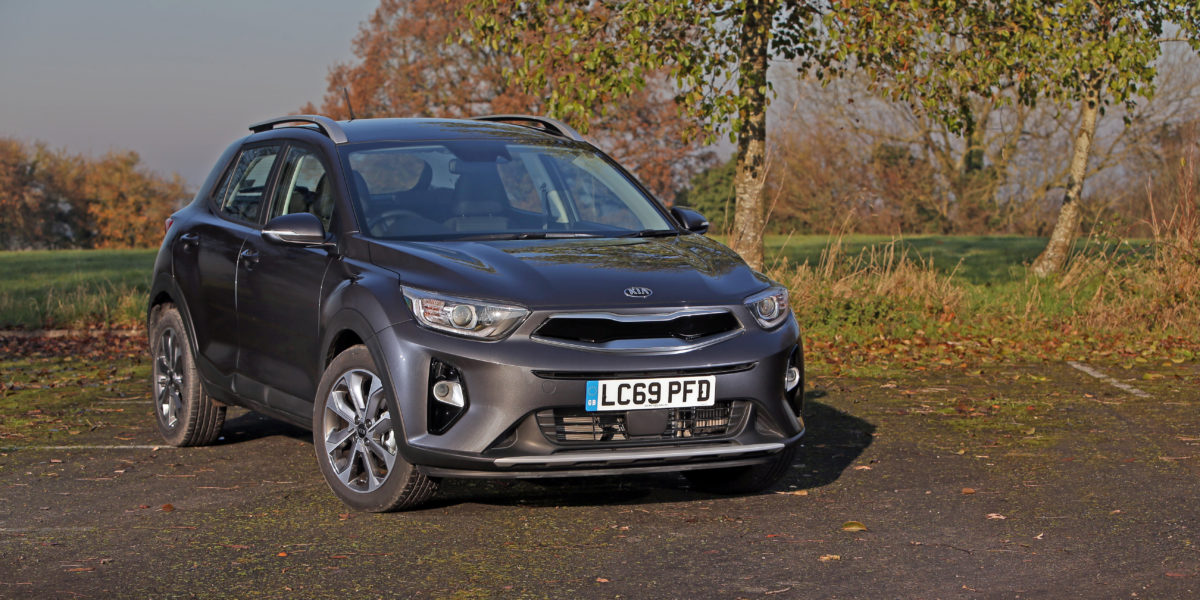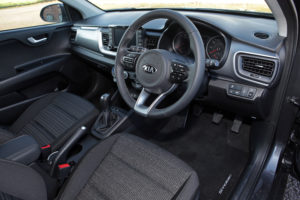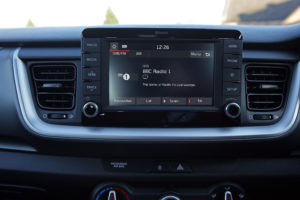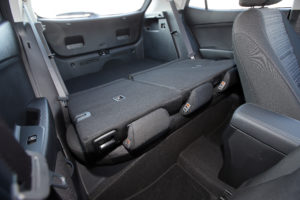
The specs
| Model tested: | Kia Stonic 1.0 T-GDi 2 |
|---|---|
| Price: | £18,025 |
| Engine: | 998cc |
| Power: | 117bhp@6000rpm |
| Transmission: | 6-speed manua |
| 0-62mph: | 9.9 seconds |
| Top speed: | 114mph |
| Economy / CO2: | 47mpg/130g/km |
| Insurance: | 14 |
Kia Stonic: Overall rating (4/5)
Kia’s range of cars has mushroomed in recent years, leading to some confusion as to what’s what. The neatly styled Stonic is a B-segment SUV that’s pitched against solid competition from the likes of the Renault Captur and Peugeot 2008 – think of it as a Kia Rio on stilts. While the Stonic isn’t as high-profile as some of those more established rivals (it first arrived towards the end of 2017), it’s every bit as good as most of them, if not quite a class leader. But in terms of value, quality and user-friendliness, the Kia is definitely a winner.
Cabin (4.5/5)
Kia crossed a cabin quality threshold several years ago too, putting its finishes and switchgear on a par with semi-premium brands such as Volkswagen. Even better, Kia has also taken the VW route of function over form, so it’s generally very user-friendly, with a dashboard and instrumentation that are very clear, although the multi-function steering wheel (as with many new cars) can be initially confusing. The hi-fi sounds good, pairing a phone is simplicity itself, the seats are comfy (with plenty of adjustment) and there’s ample rear-seat head and leg room. With a decent array of cubby holes, a class-competitive boot capacity (352 litres seats up, 1,155 with them down), the Stonic’s cabin is also very user-friendly. The only possible black mark is the rear three-quarter visibility; the C-pillar is thick and on our test car there was no reversing camera to make manoeuvres easier. Also, as with most rivals, there’s no spare wheel provided.
Driving (4/5)
Virtually all Stonics come with the three-cylinder turbocharged 1.0-litre petrol engine tested here. A 1.6 CRDi diesel is available, but with a manual gearbox only and in just one trim level (Stonic 3, for £19,985). The petrol engine comes with a six-speed manual gearbox as standard, but a seven-speed dual-clutch auto is available for an extra £1,000. The 1.0-litre engine is perky enough and reasonably flexible, but it only really gets going with 2,000 revs on the clock. A sticky clutch on our test car made smooth starts a challenge, but once on the move the handling is tidy and the ride is comfortable, with impressive high-speed refinement and stability. The lane departure warning is quite aggressive (although not necessarily any worse than many rivals), but this is easy to switch off via a button on the dash. Throw in light controls for everything and the Stonic really is a breeze to drive.
Costs (4.5/5)
The good news continues here, because while the Stonic isn’t bargain-basement as such, with a starting price of £17,775, it is very good value. That buys an entry-level Stonic 1.0 T-GDi 2 as tested here, which comes with 17-inch alloys, electrically adjustable, heated, folding door mirrors, air-con, cruise control and speed limiter, rear parking sensors, Bluetooth and a seven-inch touch-screen display. Frankly it’s all you need, although for £19,255 you can have a Stonic 3 that adds a SatNav, reversing camera, AEB, climate control and automatic windsceen wipers. The £20,755 Stonic 4 comes with blind spot warning, faux leather trim, heated front seats and steering wheel plus keyless go.
The entry-level Stonic 2 sits in insurance group 14 as it doesn’t have AEB; the Stonic 3 gets this tech to drop three insurance groups, while the Stonic 4 is in group 12.





